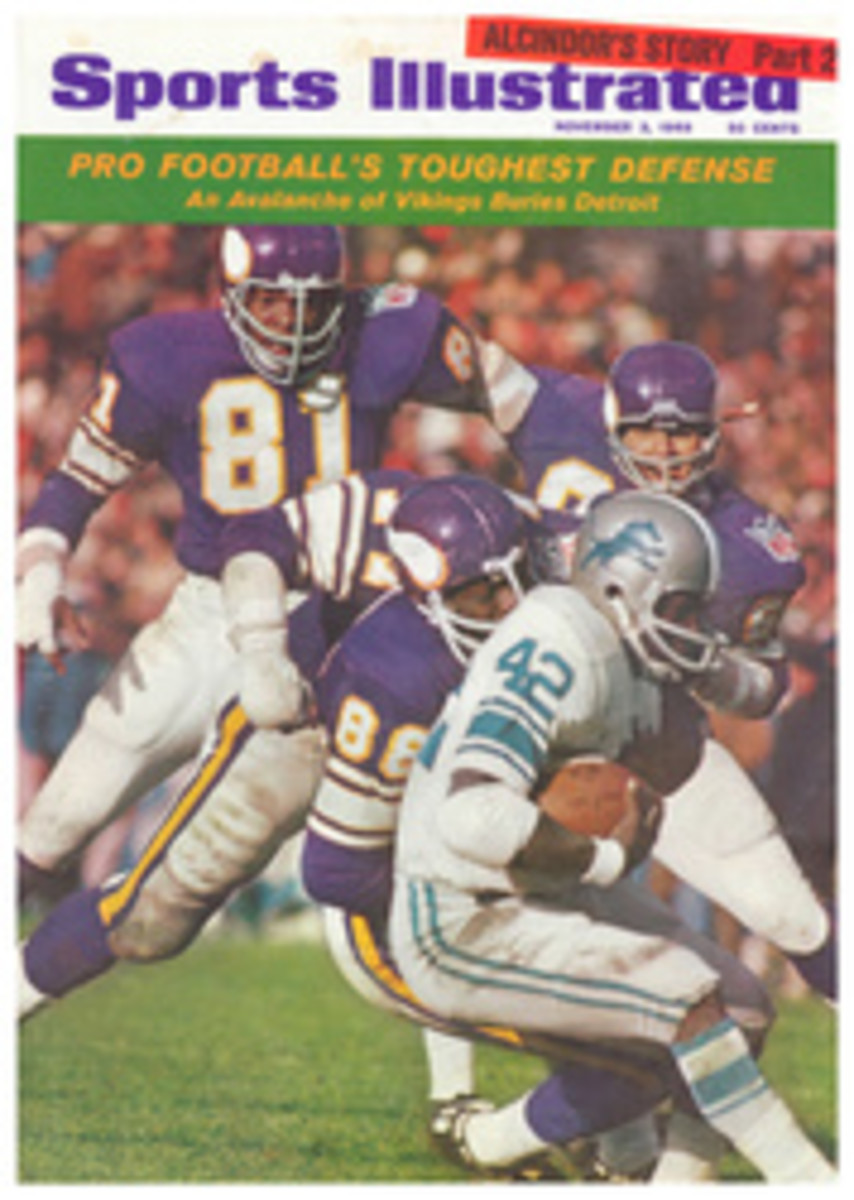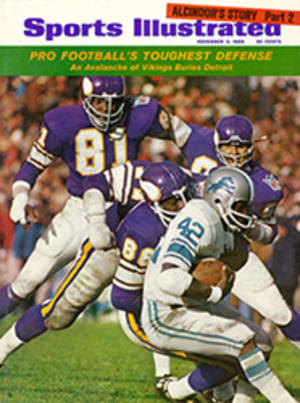
All the big money was on the red
The bettors, decked out in Big Mac Sanforized overalls, perched along the wire fence. They were drinking Coors beer from cans, waving 10s and fives and ones and dealing fast. "I'll give 2-to-1," one of them hollered, "gon' be red when you look at the light. You got a white collar, you just sunk."
Now two sleek greyhounds flowed like laser beams down the middle of a quarter-mile field. Within 15 seconds they had closed on a fleeing jackrabbit, whose 80-yard head start had dwindled to five and whose great ears were now pinned to its sides as it attempted to reach the sanctuary of a far fence. Round and round they went, the rabbit gaining a momentary edge with 90° turns, the swifter dogs easing out of a slide on the wet grass and again gathering momentum until the rabbit, a pulsebeat away from oblivion, finally thrust itself beneath the waiting barrier. Today, at least, it would not join its slower mates, who were now rotting in bins with discarded beer bottles—a Kafkaesque setting where flies proved the ultimate victors.
A red beam flashed atop what was once an Abilene traffic light, signifying that the red-collared dog had won under the sport's complicated point system. Phyllis Bandy of Kountze, Texas, who started playing hooky when she was 9 to come to these coursing meetings, was pocketing a few bucks. Fred Scoggins, loser of $1,354 on a single race the day before, was now close to breaking even on the red. And Jack Roche, a former St. Louis Cardinal catcher who names most of his dogs after his favorite ballplayers, was readying Glenn Beckert for a match against Orange Doll.
Yes, Glenn Beckert has raced in Abilene, as have Norm Cash, Bob Gibson, Jerry Koosman, Bill Freehan and even Buzzie Bavasi. They show up twice a year with Roche, making the pilgrimage from Aloha, Ore. All of Roche's friends are there, too: red-faced oldtimers from Miami, Waco and Chicago. And they lay down a few side bets and talk dogs as they have every year since 1934 and maybe get royally smashed in the Gaslight Club at the Trail's End Motel.
Not since Wild Bill Hickok roamed the streets as marshal has this prairie town known similar old-fashioned revelry. Such happenings occur every April and October, when the National Coursing Association brings many of its 3,000 greyhound owners together. For more than a week 600 dogs run in five single-elimination stakes, with the top prize money in the autumn U.S. Challenge Cup reaching $3,000 and side bets sometimes running as high.
Coursing, which may date back to the Egyptians, was the first American sport, or so claims an intense follower of the game, F. B. (Happy) Stutz. "The early settlers brought their greyhounds over from the British Isles," says Happy. "Coursing was their recreation on weekends. They chased live rabbits just like we do now." The first official championship was held at Cheyenne Bottoms, just north of Great Bend, Kans., in 1886. Kansas, where jackrabbits are plentiful—and a nuisance—soon became the coursing capital, with dog owners pitching tents in Junction City, Newton and Chanute before deciding to transform an Abilene wheat field half a mile from the end of the Chisholm Trail into a permanent home in 1934.
They could hardly have picked a more prosperous location. Abilene, which used to have more saloons than all other businesses combined, now has more banks than taverns—8,000 citizens currently push $28 million into those tills. Much of that wealth comes from the 40-some kennel owners who, beside making Kansas the largest greyhound breeding center in the country, provide lodging for the dogs at each NCA meeting. Some of the tourist trade from the Eisenhower Center, which has had almost 20,000 visitors a week since the 34th President was buried there in April, also finds its way down to the coursing grounds. So coursing veterans have moved from tents to motels, and today the NCA operates on an annual budget of $175,000, overseeing the Greyhound Hall of Fame and a 55-acre layout with a commissioner and five other full-time employees. Despite the surface prosperity, even the sport's elder citizens concede that interest may be on the wane. "The younger generation is not as fascinated with it as we were," says Happy Stutz. "It's sort of like bowling on the green; it's been around for so many years. But I'm afraid of what's going to happen. We may be living in the past."
More and more, coursing is serving as a mere training ground for the multimillion-dollar Florida dog-racing business, the pari-mutuel version of the sport in which mechanized rabbits are used. It is precisely coursing's use of live rabbits that may spell the sport's demise. Perhaps 25%—on a muddy field as high as 50%—of the jackrabbits are caught and killed. To the uninitiated the sight of a mangled rabbit is not a pretty one. The ASPCA, as well as such public figures as Dr. Karl Menninger of the Topeka, Kans., mental health clinic, have attempted to clamp down on the NCA. But the dog owners' rationale is that the rabbits are classed as rodents and are a constant menace to the Kansas farmer.
"People think this is cruel, but I wonder if they've ever seen a jackrabbit drive where they drive them into a net; stand around and beat them with clubs until they've killed a couple of thousand," says Park Supervisor Dick Helvey. "They can't shoot them because there are too many people standing around watching—now that's cruel."
"A rabbit will go right down a row of corn and cut every one down to get moisture out of the stalk," says Bill Janecek of the NCA executive committee. "Seven rabbits will cat what one cow will. The farmers are real glad to see us coming." So, to coursing enthusiasts, any decline in the rabbit population is justifiable homicide. Besides, it's the dogs they want to talk about—and at the fall championships there were some good ones.
It seemed only fitting that an Irish import should win the Challenge Cup prize last week, since Ireland remains the world's premier coursing center, with more than 110 parks. When a group of American dog speculators journeyed to the Irish Coursing Derby in Limerick last February, Walter Ewalt of Augusta, Kans. instructed his brother Bill to "pick up a dog with speed so I can cross him with some of mine."
Ewalt liked Country Support, a 2-year-old that finished fourth out of 64 in the coveted Irish stakes. And, as luck would have it, the widow of Ireland's former minister of education was willing to let all of her late husband's dogs go. Country Support was purchased for £500 and shipped to the States. "If she hadn't wanted to get rid of the dogs, Ewalt couldn't have got him at any price," says NCA President Clyde Lemon.
Country Support did not miss stride on his ocean crossing. He settled down on Walt Ewalt's 160-acre spread in Augusta, and Walt began schooling the dog for eventual delivery to his brother at Hialeah. This partnership has been operating since 1920, Walt training and Bill racing. Walt figured Country Support was a winner and, adhering to his theory that a top coursing dog will eventually make a top racing dog, brought him to Abilene, where he promptly sped past four opponents and into the Challenge Cup finals.
Now the biggest chase of all was just an hour away, and in a dimly lit barn a quarter mile from the track Walt was giving Country Support a last-minute going-over. The dog was plainly nervous. A muscular, well-proportioned animal that looked bigger than his 67 pounds, he was anxious to get into the open field, where his trim white-and-brindled coat would become a mere blur of speed, a 40-mph wisp of muscle.
When the call for the finals came, Ewalt, in faded blue coveralls, led Country Support, wearing the red collar, out of the paddock and toward the starting gate, where the import and a fawn-colored dog named Isotta were meshed into a black harness. Dick Helvey took his stick and nudged the rabbit toward the front of a pen. Out it sprinted, a prisoner of destiny.
The dogs followed, churning the turf. Country Support moved one length ahead, then two, gaining a point for each length. By forcing the rabbit into a pair of turns he earned two more points. When the rabbit finally slid beneath the fence, 30 seconds after release, Country Support was a 4-0 winner. Not for nothing had Commissioner Norman McAsey praised the dog for "the smoothest leg action I've ever seen on a coursing track."
Walt Ewalt rested by the paddock savoring success. "He broke good this time," Ewalt said. "He showed a little speed a time or two. Guess my brother will be wantin' him on the first truck out to Florida next week."
Ewalt's winnings, all of which will go back into his dog operation, came to $3,000 in stakes money, $675 more on a Calcutta pool and "a couple side bets, too." He grinned, and glanced at the fence, where the Coors cans still popped, the oldtimers still tucked their hands in their overalls and there was lots of talk about winning with the red.
PHOTO

